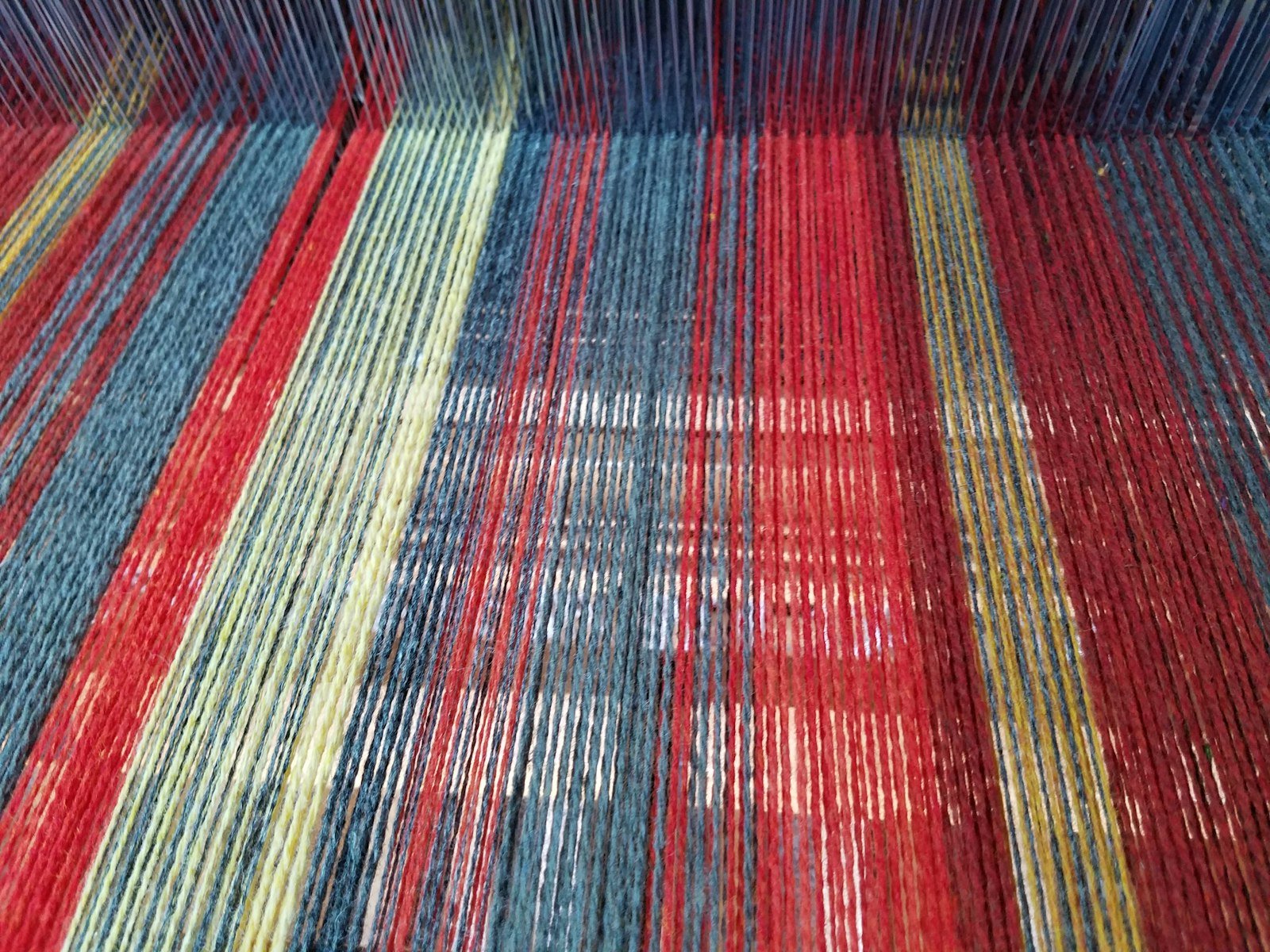Today we welcome Karen Donde to tell us about one weaver's quest for knowledge.
Research has changed since my first term paper. Type a subject into your favorite internet search engine. Hit the enter key and voila, hundreds, maybe thousands, of online references pop up. Some may be a little off target, others WAY off target and even those that seem on target may not be accurate. Still, it’s almost always possible to find what you’re looking for pretty fast.
Sometimes, however, I like to go old school. At the suggestion of Catharine Ellis, of Woven Shibori fame, we’ve started a new Textile Study Group in Western North Carolina to investigate historic, cultural, and technical aspects of textiles. Catharine was the presenter at our first meeting in January and told us about her tour of several textile art centers in India.
When the sign-up sheet was passed around last fall, somehow February seemed like a good month for me to present, as it was early in the Haywood Community College semester and after Convergence exhibit deadlines. I decided to talk about manufactured regenerated fibers, such as rayon, Tencel, and bamboo: how they’re made, how sustainable they really are, and why many handweavers love them. My textbook for the Haywood weaving classes was a handy and thorough reference for the technical information. (Textiles, by Sara J. Kadolph, if anyone is curious.)
Then fifty people showed up for Catharine’s talk and, suffice it to say, she rocked. Deciding more in-depth research was required so I would not embarrass myself, I turned to my other go-to source: Handwoven’s indexes easily accessible here. My textbook is an excellent reference, but is focused on the textile industry. I knew I would find articles in back issues of Handwoven that discussed these fibers and yarns from the handweaver’s perspective, and I recalled seeing a whole issue devoted to what were called “new” fibers at the time.
I’ve saved every issue of Handwoven since I began subscribing in 1999, and I've been lucky to collect many more from the 1980s and 1990s, so I can usually pull almost any issue I need right from my own stash. I downloaded the 2005-2011 Handwoven Index to start my search for these not-quite-natural but not-synthetic-either fibers.
Now here’s what’s fun about these indexes: it is not possible, at least not yet, to search them by keyword like a computer database. The index is a PDF document that requires scrolling through an alphabetized list of subjects. Bamboo is right on the first page. I noted the articles of interest on a little yellow sticky note and scrolled to Fibers.
Before leaving the B’s, I spotted "Beiderwand," the subject of my latest structure fascination and a workshop that I teach. I probably had already pulled those references, but I noted them just in case. “Collapse Weaves,” my current project assignment at Haywood, came up shortly thereafter, so I started another sticky note. On the long path from F to Y, I spotted “Jurying Handwoven Textiles.” I’ve been invited to jury a local textile show, so better grab that one. Every so often, I come across a reference for a story I wrote. That’s always fun.
Oops, almost forgot about “Sea Cell,” “Sea Silk,” and “Soy Silk,” but there they are in the S’s. Finally I arrive at “Yarns” and quickly spot the issue I remember: January/February 2005, page 26-29, “Fiber Forecast: A Guide to Using Yarns.” I head to my Handwoven shelves and pull all the issues I’ve noted. Flipping quickly through the one from 2005, I find lots of stories about the subject of my February talk and a handy chart on page 29. I even find a collapse-weave article on page 48.
I already feel more confident about my study group talk. Hope we get another good turnout! Meantime, happy flipping to all of you.


